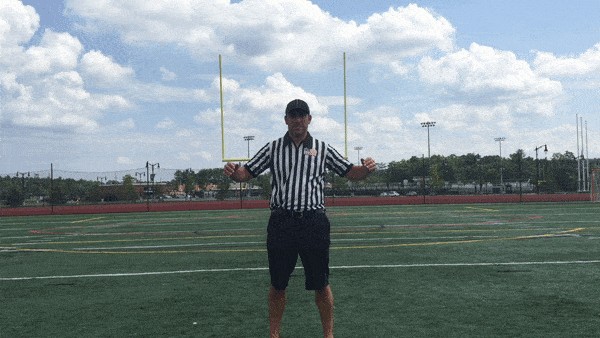In American football, scoring is primarily dominated by touchdowns and field goals, but there’s another, rarer way for a team to put points on the board: the safety. Unlike offensive scores, a safety is a unique defensive score that can dramatically shift momentum in a game. It’s crucial to understand what a safety is, not only to appreciate the nuances of football but also to recognize its strategic importance.
This article will delve into the definition of a safety in football, explain the different ways a safety can occur, and highlight why this play is significant in the game.
Defining a Safety in American Football
A safety in football is awarded to the defensive team when the offensive team commits specific infractions within their own end zone. According to the official NFL rulebook, a safety is declared under these primary conditions:
- Offensive Foul in the End Zone: If the offensive team commits a penalty within their own end zone, such as holding, illegal block, or intentional grounding, it results in a safety.
- Offensive Ball Carrier Tackled in the End Zone: When an offensive player is tackled in their own end zone while in possession of the ball.
- Ball Fumbled or Goes Out of Bounds in the End Zone (by Offense): If the offensive team fumbles the ball and it goes out of bounds in their own end zone, or if the offense propels the ball into their own end zone and it becomes dead there.
Essentially, a safety occurs when the offense is responsible for the ball becoming dead in their own end zone. It’s a penalty that results in points for the opposing defense.
While safeties might not be as frequent as touchdowns, they are significant plays that can change the course of a game. Referees signal a safety by raising both arms above their head, indicating the score to everyone on the field and in the stadium.
How Does a Safety Happen? Common Scenarios
Safeties are often a consequence of offensive errors, particularly when a team is backed up deep in their own territory. Here are some typical scenarios where safeties occur:
-
Tackling in the End Zone: This is the most common type of safety. It often happens when the defense applies heavy pressure on the quarterback or running back in the backfield, especially close to their own goal line. Aggressive defensive play, like blitzing, increases the chances of tackling an offensive player in their end zone.
-
Fumble Out of the End Zone: This can occur on offense or special teams plays. A prime example is during a punt attempt deep in the offense’s territory. If a bad snap sends the ball into the end zone and the punter fumbles or it goes out of bounds in the end zone, it’s a safety. Special teams mishaps in tight field positions often lead to this type of safety.
-
Offensive Penalty in the End Zone: Less frequent, but still possible, are safeties caused by offensive penalties committed within their own end zone. Intentional grounding, where a quarterback intentionally throws the ball away to avoid a sack without a receiver in the vicinity, when committed in the end zone, is a safety. Holding penalties in the end zone can also lead to a safety.
The Outcome of a Safety: Points and Possession
When a safety is awarded, the defensive team receives two points. Beyond the immediate score, a safety also involves a change of possession. After scoring a safety, the team that conceded the safety must put the ball back in play via a “safety kick.”
This safety kick is typically a punt or a kickoff from their own 20-yard line. The receiving team gains possession of the ball after the safety kick, further compounding the disadvantage for the team that gave up the safety.
Therefore, a safety not only awards points to the defense but also gives them possession of the ball, essentially providing a significant swing in momentum.
Strategic Implications of Safeties
Understanding safeties is crucial for appreciating football strategy. Coaches often make decisions, especially in punting situations when deep in their own territory, with the risk of a safety in mind.
-
Punting Strategy: When a team is near their own end zone, punting becomes a strategic decision to avoid risking a safety. Coaches often prefer to punt rather than attempt to advance the ball offensively, hoping to avoid being tackled in the end zone or making a mistake that leads to a safety.
-
Defensive Aggression: Defenses often increase their aggressiveness when the opposing offense is close to their own goal line. The potential to score a safety by tackling the ball carrier in the end zone becomes a high-reward opportunity for the defense in these situations.
-
Momentum Shift: Safeties can dramatically shift the momentum of a game. A two-point swing, combined with regaining possession, can energize a defense and demoralize an offense, changing the psychological landscape of the match.
Conclusion: The Rare but Impactful Safety
In summary, a safety in football is a defensive score worth two points, awarded when the offense is responsible for the ball becoming dead in their own end zone through various means like being tackled, fumbling out of bounds, or committing a penalty. While not as common as other scoring plays, safeties carry significant weight due to the points awarded and the change of possession that follows.
Understanding what a safety is and how it happens is fundamental to grasping the intricacies of American football. It highlights the importance of field position, offensive execution, and defensive pressure in this exciting sport.
Want to deepen your football knowledge? Explore our Ultimate Football Guide to become a true football expert!
Boost Your Football IQ Today!
Stop wasting time searching online. Our guide provides a streamlined approach to learning football rules and strategies.
Learn Football Now!
Interested in more football rules? Check out these helpful articles:
Rules Of American Football – Beginner’s Guide
Difference Between Legal & Illegal Blocks In Football
Illegal Contact With Wide Receivers Explained
What Is A Flag In Football? Penalty Flags Explained
Can A Football Game End On A Penalty?
Football Overtime Rules: NFL Vs. College/High School
Understanding the 5 Yard Contact Rule In The NFL
Learn Offsides, Neutral Zone Infraction, and Encroachment
Complete Guide To Referee Signals In American Football
Explore more football insights in our learning center!

